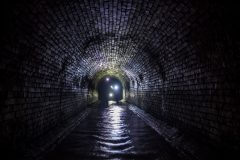Shulamit Tana
The challenges involved in obtaining water, storing it and making it drinkable are not new to humanity, which since the dawn of civilization has faced the task in fascinating ways. Life in the modern age, with clean, tasty and even boiling water, which comes out fresh at the push of a buttonThe water bar In the office, we may be mistakenly made to think that cold drinking water has always been readily available to us, but this is not the case.
It all started about 10,000 years ago
When humans began to build settlement forms in the area of fresh water bodies, rivers and natural springs. In the absence of access to water sources, man began to dig wells and build cisterns, but without a connection to a flowing water source, these tended to become easily contaminated. While the population on the banks of the river faced the simple solution of discharging the sewage towards the ocean - the owners of the pits also faced questions of sanitation.
Asian writings reveal complex sanitary infrastructures in ancient times
One of the oldest evidences of public water management comes from ancient Asian writings attributed to the Indus Valley culture. The reporters present plans for impressive and advanced systems that included private toilets connected to the sewer network in one settlement, and public and private bathhouses connected to a system that manages several reservoirs at the same time. The urban plans of the settlements of Arappa, Moenjudaro and Rahigari describe the world's first sanitation networks, which include covering the walls of the wells with ceramic tiles, coverings from above and thorough cleaning once in a while, all with the aim of keeping the water clean.
Greece: the birthplace of democracy, clay and the fire department

The innovation of the Greeks in the field, and more precisely of the Minoan culture that established its colony on the island of Crete starting from the Bronze Age, was that in the capital Knossos well-organized drainage canals and water systems were discovered that flow clean water into the residents' homes and remove the dirty ones. The Minoans used clay pipes to transport water, and were probably the first to install indoor plumbing systems for showers, and they also take credit for using the same pipe-that-puts-out-water-under-pressure to put out fires that broke out in Alexandria.
In ancient Rome the situation was quite similar - use of lead pipes instead of clay, and public fountains and wells for the benefit of the residents. The "Chloe Maxima", the great bib, poured into the Tiber River and the constant flow in the lead pipes prevented the accumulation of sediments and exposure to infections. Roman armies and cities conquered in Britain used complex sewer networks sometimes constructed from hollow elm trunks.
The Mesopotamians also chose clay for the sewer pipes, and later switched to clay and its advantages: replacement of parts and easy cleaning.
Europe: utilization of the terrain route in the best case, sewage in the main streets in the worst case
In European cities in the Middle Ages, natural waterways were used to carry sewage, and these were eventually covered and used as sewers. London's Flet River, which used to flow in two tributaries on the surface of the ground, is an example of such a sewer system that was covered until it became the city's largest underground river.
In the Paris of that time, sewage ran along canals that crossed the streets, until the stench overwhelmed the residents and in 1370, a 300-meter-long sewer line was closed for the first time on rue Montmartre.
In Dubrovnik in Croatia, which until the First World War was called by its Latin name Ragusa, the work on the cesspool and the sewage system was completed in the 14th and 15th centuries. Except for minor changes and repairs made in recent centuries, the city uses the same old sewer system.
Game of Thrones - the first use of the royal house
English writer and poet, Sir John Harrington will also be remembered as the inventor of the toilet flush method, and as the author of "Reexamining a smelly topic: Changing the shape of the toilet". And so it happened, that the first to enjoy the modern toilet was Queen Elizabeth I, his godmother.
The relationship between health and water quality: not self-evident
It was only in the 19th century that the relationship between water quality and the health of the drinkers became clear. On the one hand, London municipal workers noticed a decrease in cholera cases after the installation of water treatment systems, and on the other hand, at the same time, the industrial revolution began and water all over the world began to become contaminated.
Over the years, innovative and more sophisticated water treatment systems were designed and built, which succeeded in reducing the occurrences of the contagious infectious disease cholera. Cholera outbreaks are common in places with a poor sanitation system, but natural disasters and an ongoing state of war (such as the civil war in Yemen) can also lead to an epidemic.
The last cholera outbreak in Israel happened in 1970 and lasted for a month and a half, it, like its predecessors, provided a huge boost to the development of everything related to public hygiene. As long as we live in a developed country, with a proper sanitary system, the chance that we will be infected with the bacteria of the gods or others is relatively low. Along with the ministerial responsibility, we also have to observe some rules: drinking clean water and observing hygiene - and especially washing our hands.
